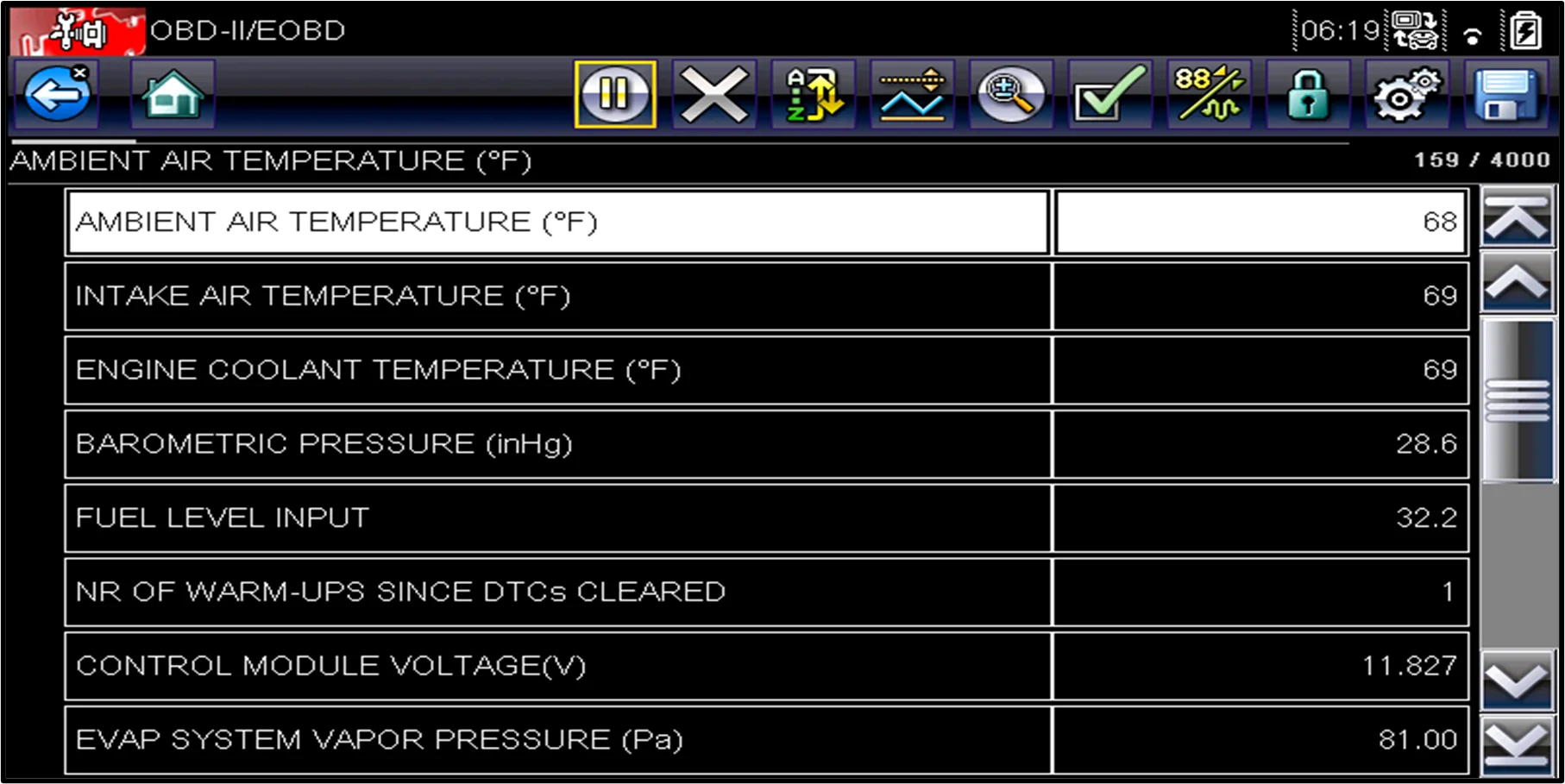$01 Parameter Identification (PIDs)
MODE $01 Parameter Identification (PID) displays emission-related data PIDs such as inputs, outputs, and system status. Pre-CAN global OBD II displayed between 15 and 30 PIDs. For CAN systems, the data list was significantly expanded. When using a global scan tool (GST) to diagnose the vehicle, understand the amount of data available to view and that it will vary depending on the model year and communications protocol.
The following are three examples of PID lists.
1) This data list was captured from a 1997 pre-CAN vehicle. Because of the limited data displayed from some pre-CAN systems, many technicians chose to look at the manufacturer's (OE) specific data. In reality, there was enough information available to diagnose and repair a high percentage of vehicles.

2) This PID list was captured from a 2003 pre-CAN vehicle. For later model pre-CAN systems.

3) This PID list was captured from a 2019 CAN-equipped vehicle. The available PIDs list was expanded because CAN systems transmit data faster and in packets of 6 PIDs per request. In this case, a technician has more help to diagnose more problems through the global side of the scan tool.

Regardless of the year vehicle, learn to customize the PID list to increase the speed at which they update their data. Focus on the need-to-know PIDs, not the nice-to-know PIDs. Think of it this way: you have a one-lane road, and only six cars are moving at the same speed. The next time you drive that road, there are 30 cars on the road moving at the same speed. Which one is faster to travel through?
